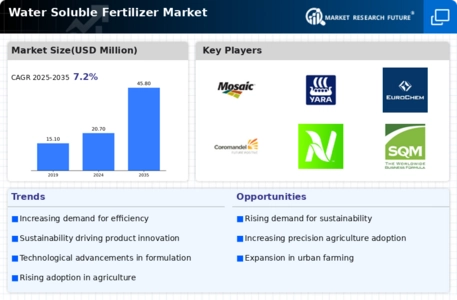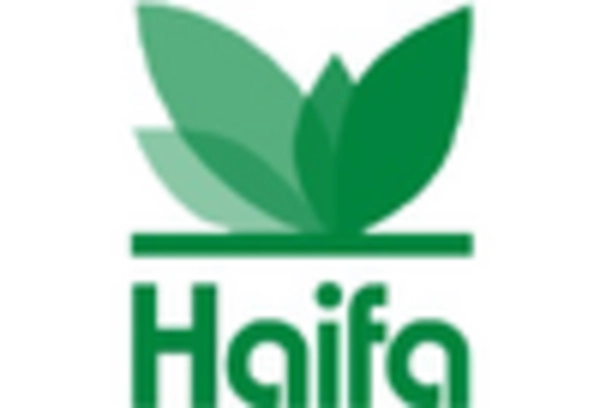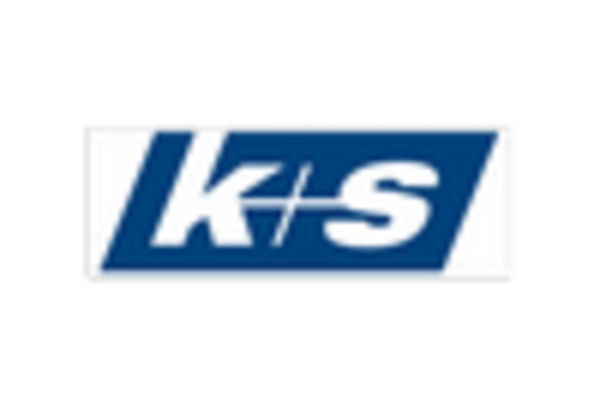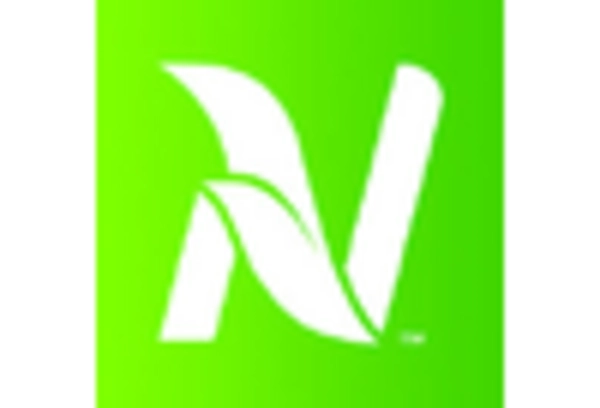Market Trends
Key Emerging Trends in the Water Soluble Fertilizer Market
water-soluble fertilizer market is experiencing significant growth and dynamic trends driven by factors such as increasing demand for high-efficiency fertilizers, advancements in agricultural technology, and growing awareness of sustainable farming practices. Water-soluble fertilizers, also known as soluble fertilizers or liquid fertilizers, are formulations that dissolve readily in water, allowing for rapid nutrient uptake by plants and efficient nutrient utilization. One prominent trend in the market is the rising demand for water-soluble fertilizers as farmers seek to improve crop yields, enhance nutrient management, and minimize environmental impact. With global population growth and changing dietary preferences driving demand for food, feed, and fiber, there's a growing need for fertilizers that can maximize crop productivity while minimizing resource inputs and environmental footprint.
Moreover, advancements in agricultural technology and precision farming practices are driving innovation in the water-soluble fertilizer market. Manufacturers are developing new formulations and delivery systems that enhance the efficiency, efficacy, and convenience of water-soluble fertilizers for farmers. These innovations include controlled-release fertilizers, fertigation systems, and micronutrient-enriched formulations that enable targeted nutrient application, reduce nutrient losses, and optimize crop nutrition throughout the growing season. Additionally, there's a growing emphasis on tailor-made fertilizer solutions that address the specific nutrient requirements and agronomic challenges of different crops, soil types, and climatic conditions, enabling farmers to achieve optimal yields and quality.
Furthermore, the water-soluble fertilizer market is benefiting from regulatory changes and sustainability initiatives driving the adoption of environmentally friendly and socially responsible farming practices. Regulatory agencies and industry associations are increasingly promoting the use of water-soluble fertilizers as part of integrated nutrient management strategies that minimize nutrient runoff, leaching, and pollution of water bodies. Additionally, there's a growing demand from consumers and retailers for sustainably produced food products, driving adoption of water-soluble fertilizers that support responsible nutrient stewardship, soil health, and ecosystem resilience.
Additionally, the water-soluble fertilizer market is witnessing increasing demand from emerging economies and regions facing challenges such as water scarcity, soil degradation, and climate variability. As farmers in these regions seek to improve agricultural productivity, enhance food security, and adapt to changing environmental conditions, there's a growing market for water-soluble fertilizers that offer advantages such as precise nutrient delivery, reduced fertilizer wastage, and improved crop resilience to abiotic stresses. Moreover, as global agricultural trade continues to expand, there's a corresponding increase in demand for water-soluble fertilizers to meet the nutrient requirements of high-value crops grown in diverse agro-climatic zones and exported to international markets.
However, the water-soluble fertilizer market faces challenges such as pricing pressures, supply chain disruptions, and knowledge gaps among farmers. While water-soluble fertilizers offer several advantages over conventional fertilizers, including faster nutrient uptake, reduced soil salinity, and improved crop response, they may be perceived as more expensive or complex to use by some farmers. Additionally, fluctuations in raw material prices, energy costs, and transportation logistics can impact production costs and pricing dynamics in the water-soluble fertilizer market, posing challenges for manufacturers and distributors.
Moreover, there's a need for greater education and extension services to raise awareness about the benefits and best practices of water-soluble fertilizers among farmers, particularly in developing countries and smallholder farming communities. Investing in farmer training programs, demonstration plots, and knowledge-sharing platforms can help build capacity, foster adoption, and promote sustainable use of water-soluble fertilizers as part of integrated nutrient management strategies.

















Leave a Comment